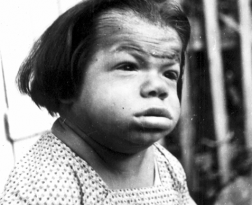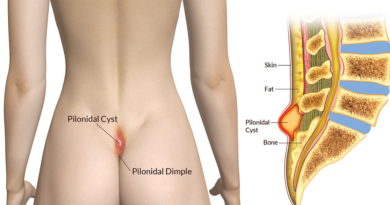Wry Neck
What Is Wry Neck?
Wry neck is also referred to as torticollis. It is a severe condition that causes your neck to be twisted and tilted. The top of your head and chin tilts in opposite direction. There are several types of wry neck condition that you can experience such as:

Types
Temporary wry neck
This type of torticollis occurs for a short time and disappears usually after two days. It is due to:
- Ear infection
- Cold
- Head or neck injury
- Swollen lymph
Fixed wry neck
It is also called acute or permanent wry neck. Fixed wry neck occurs when you have a problem with your bony or muscular structure.
Muscular wry neck
This is a type of a fixed wry neck, and is most common with many people experiencing it in their life. It occurs when muscles on one side of your neck become tight or as a result of scarring.
Klippel-feil syndrome
It is an inherited form of wry neck and rarely happens. It can occur in your baby when the bone in his/her neck is not well formed because two neck vertebrae are combined or injured or the baby was in a wrong position in the womb. A child born with this condition may experience difficulty in hearing and visualizing.
Cervical dystonia
It is also called spasmodic torticollis. It makes your neck muscles contract in spasms. If you have this condition, your head can turn painfully on one side or tilt backward or forward. This condition can happen to anyone, although middle-aged people are most commonly diagnosed with it. It also affects more women than men.
Causes
Various things are believed to cause wry neck ranging from genetic aspects to injury of the nervous.
Genetic
You can inherit genes from your family members who had wry neck condition.
Nervous system & muscle injury
You can damage the neck muscle or nerves supplying blood to your neck through accident or any other injury. This can make your neck to twist or tilt.
Symptoms
The symptoms of wry neck are gradual but worsen over time. Some of the symptoms you will experience include:
- You are unable to move your head normally.
- You feel pain in the neck or stiffness.
- You have shoulders of different height; one shoulder is higher than the other.
- Your neck muscles can be swollen
- Your chin tilts to one side.
Symptoms in Children
A child with inherited wry neck may have his or her face flattened and unbalanced. He or she may have difficulties in vision and hearing.

Diagnosis
First, a doctor will physically examine your neck to check whether it is tilted or twisted. Several methods can also be used by a doctor to confirm your diagnosis of wry neck condition. They include:
Use of an electromyogram (EMG)
This is used to measure the electrical activity of your muscles at rest and when you are using them. It is done to ascertain problems that damage your muscle tissue or nerves. Your doctor inserts a needle electrode into your neck muscle which is connected to a recording device.
The recording device records the activity of your muscles at rest. Then your doctor can ask you to contract your muscles slowly and records the activity of the muscles. The results of your muscle activities are in a video screen and you can also hear it via a speaker.
Before you undertake an electromyogram test, you are required to tell your doctor all the medicines you are or have been using. These medicines can alter the test results.
Imaging tests
Imaging tests are used to rule out structural abnormalities as causes of wry neck . Examples of these tests are:
-
MRI Scan
Magnetic resonance imaging (MRI) uses strong magnetic fields and radio waves to produce comprehensive images of inside of your body. It uses an MRI scanner to examine your neck.
-
CT scan
A computerized tomography scan uses X-rays to create detailed images of the inside of your body. It is not suitable for expectant women because it emits radiations that can affect the unborn child.
Treatment
The main purpose of treatment is to reduce pain in the neck and stiffness in your muscles. The following treatments can be used:
Medication
Your doctor will recommend painkillers to help reduce your pain in the neck such as paracetamol; inflammatory painkillers which can be used alone or combined with paracetamol. Your doctor can also prescribe muscle relaxant medicines such as diazepam to reduce stiffness in your neck muscles.
Botulinum toxin
Your doctor will inject botulinum toxin into your neck muscle to reduce pain. You can develop flu, headache, fever, weakness and abdominal pain after being injected with this medication although they are uncommon.
Surgery
If other treatments did not work well, your doctor can use surgery intervention to bring to normal your neck. Some of the surgery methods your doctor can use include anterior cervical discectomy and fusion to remove a disc in your cervical spine and cervical artificial disc replacement is used to help you achieve neck flexibility.
Tips to Prevent
Right posture
Always check your sitting position at work and when using a computer. Make sure you are sitting upright with your head not flexed forward and your back is not bent while sitting.
Use heat packs and ice
You can apply ice and heat on your neck muscles to temporarily reduce pain and spasm.
Exercise
You need to keep your neck moving normally. You can do this by doing regular gentle neck exercise to move your neck in each direction. This can help prevent you from contracture and long term muscle shortening.
Physical Therapy
Visit a physiotherapist near you .The physiotherapist can use the following method:
Massage
The physiotherapist uses their hands to massage your neck to help relief pain and stiffness.
Acupuncture
This method uses needles which are inserted in your neck to help reduce pain and promote recovery.
Transcutaneous electric nerve stimulation
In this technique, the physiotherapist uses a device with a battery to produce an electric current into your neck in order to relief pain.
Reference List
- http://www.healthline.com/health/torticollis
- http://patient.info/health/torticollis-leaflet
- http://www.emedicinehealth.com/torticollis/article_em.htm
- http://advancedhealth.ca/conditions/pain-conditions/neck-pain/torticollis–wry-neck-.html
- http://www.diagnose-me.com/symptoms-of/torticollis-loxia-wryneck.php


